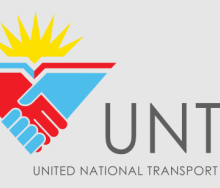The single biggest limitation to the Port of Cape Town’s efficiency is the status of its rubber-tyred gantries (RTGs) and other operating equipment, challenges that can be solved through private sector investment or if such an operator takes over the port.
This is according to the Transporter Congestion Report, released this week, which highlights the causes of truck congestion at the port.
The Western Cape Government’s Department of Economic Development and Tourism (Dedat) commissioned the report to understand the factors fuelling inefficiencies and to find solutions.
Additional findings of the report were:
• RTGs stand out of service for long periods, waiting for spare parts.
• New truck drivers to the Transnet Port Terminal (TPT) do not always know where to drop containers and cause traffic flow problems.
• Night shift only pulls approximately 10% of the traffic and is therefore underused and not cost-effective.
• Transnet National Ports Authority (TNPA) security and TPT security operate as two independent systems with limited communication.
• Handover between shifts is problematic and procedures could be tightened.
• TNPA security does not have access to the list of truckers with bookings and therefore randomly allows access to the port.
• Scanners at the gate do not always work and access is manually granted, causing delays.
MEC for Finance and Economic Opportunities, Mireille Wenger, said in a statement that there had historically been “significant” capital under-expenditure in the port which had led to substantial inefficiencies.
“This was also confirmed by Transnet in a presentation to the Western Cape Standing Committee on Finance and Economic Opportunities and Tourism in June this year, which confirmed that the Cape Town Container Terminal was severely under-equipped, with only 16 rubber-tyred gantries available, when the optimal number should be 39,” Wenger said.
The report recommends that Transnet and industry should explore the possibility of private investment to accelerate the procurement of new RTGs and to assist in procuring critical spare parts for the RTGs as a high priority.
It also recommends that Transnet and industry should explore the possibility of appointing a private service provider to operate the terminal.
According to the report, as a critical economic node, an efficient and properly equipped port has the potential to contribute an additional R6 billion in exports, create roughly 20 000 direct and indirect jobs, and generate over R1.6bn in additional taxes by 2026, if there is significant investment in key infrastructure. However, this potential is being compromised, and as implemented at the ports of Durban and Ngqura, requires the inclusion of the private sector as a partner to remedy the lack of capital expenditure.
“Only by including the private sector will the Port of Cape Town start to realise its full potential and boost economic growth, which will lead to many more jobs,” Wenger said.
She added that the inclusion of the private sector was at the core of the government’s economic action plan, ‘Growth for Jobs’, which sets a target of building a trillion-rand, jobs-rich provincial economy, with a 4-6% per year growth rate in real terms by 2035.
This has the potential to create over 600 000 jobs.
“It is time to bring in the private sector and to work together to achieve the kind of breakout economic growth we need to create thousands of new jobs in the province, and in South Africa,” Wenger said.













